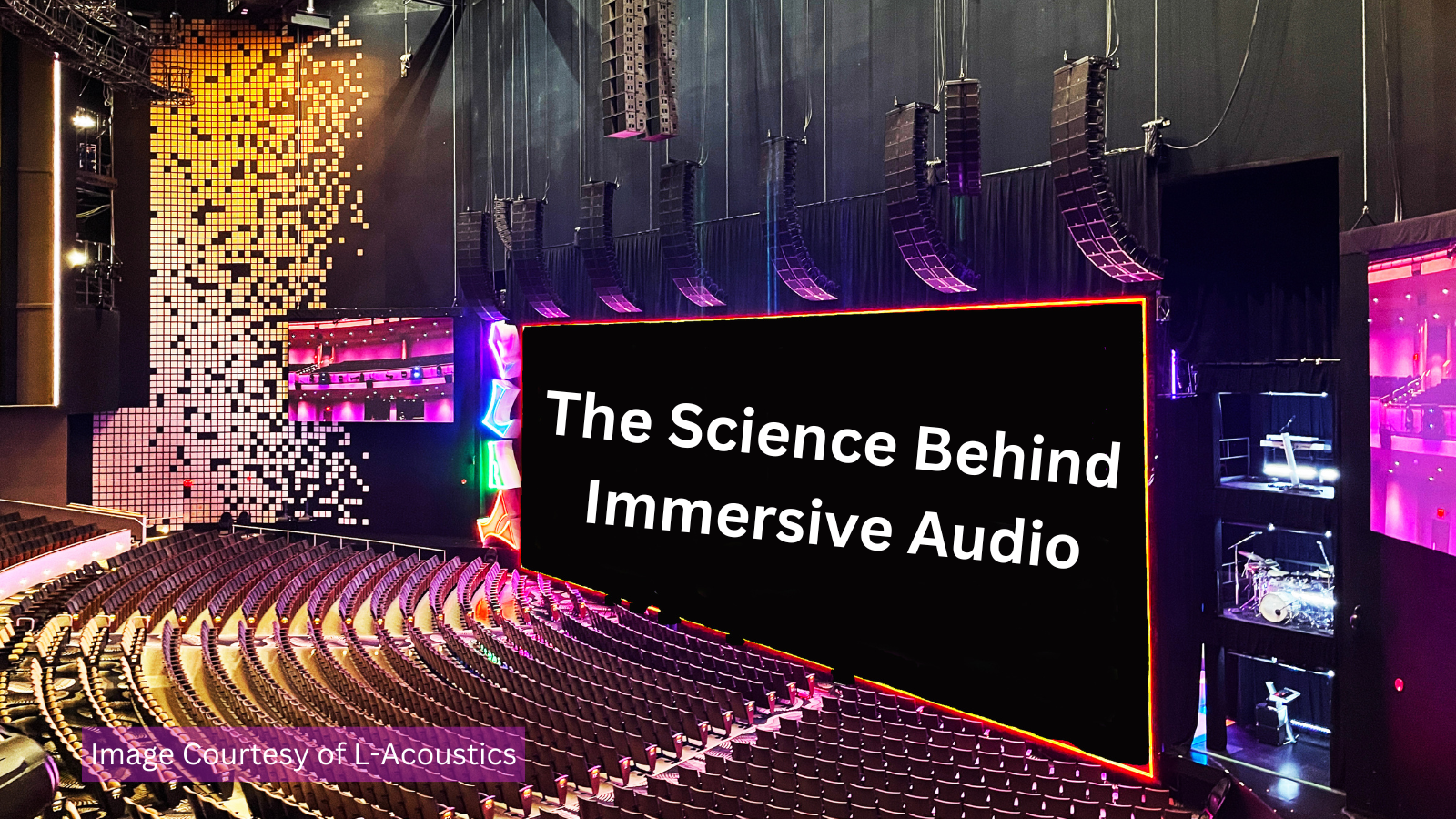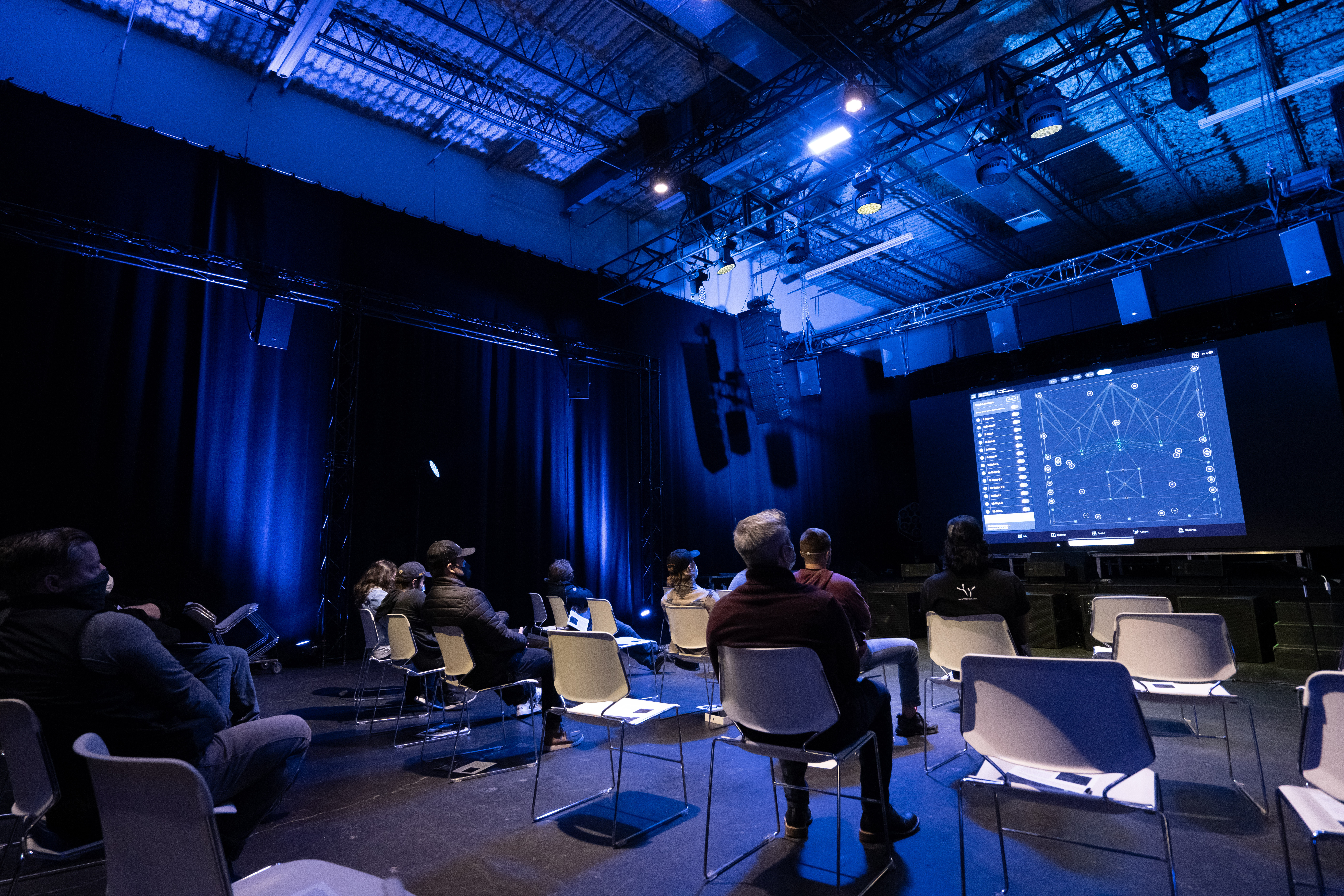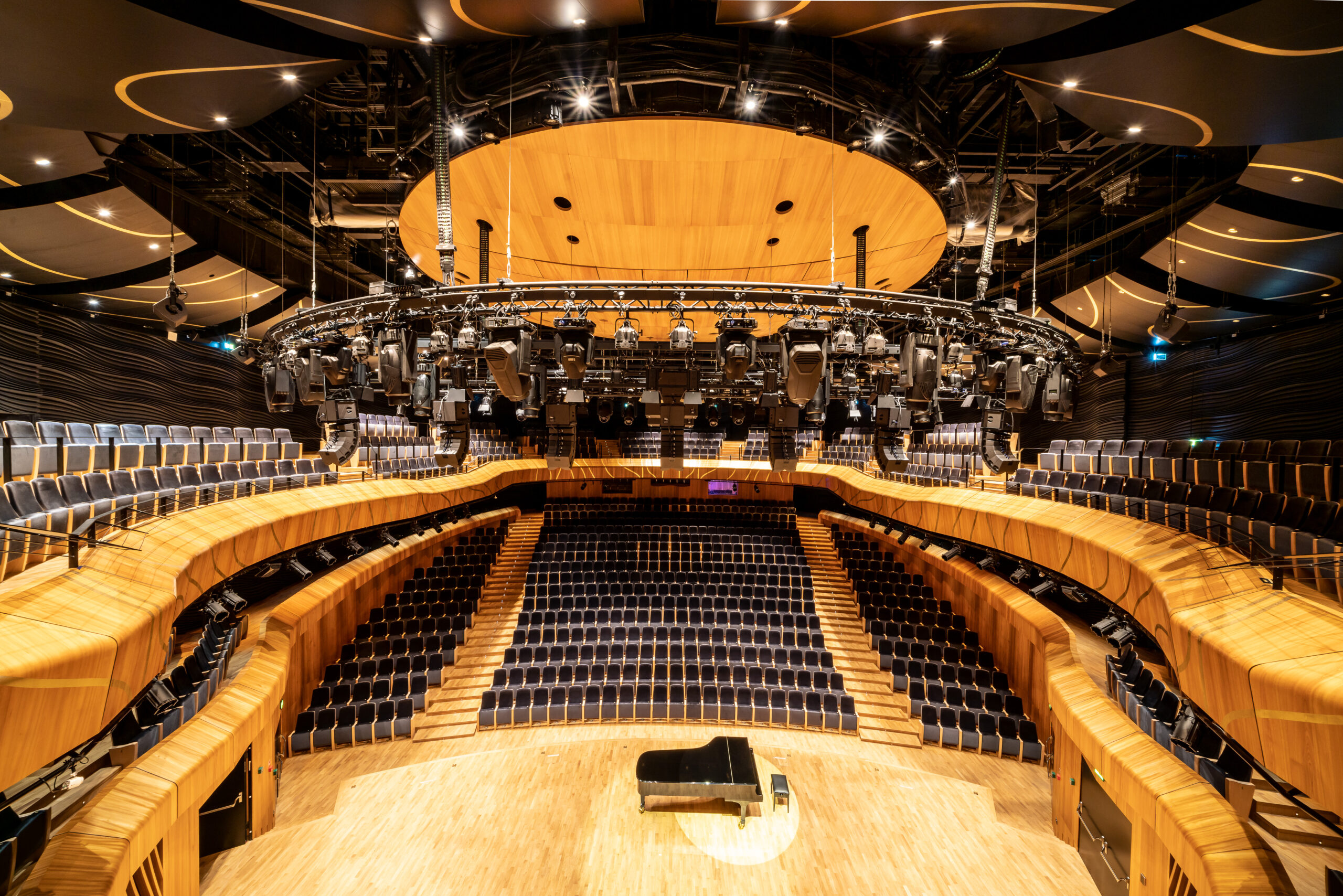The Science Behind Immersive Audio
 Immersive environments are becoming more common with things like virtual reality (VR) and extended reality (XR) becoming mainstream — and audio is a big part of that experience. However, virtual experiences aren’t the only way that audio is used to engage a consumer. Immersive audio is being used in so many different spaces in the real world and the technology behind it might be even cooler than the experience itself.
Immersive environments are becoming more common with things like virtual reality (VR) and extended reality (XR) becoming mainstream — and audio is a big part of that experience. However, virtual experiences aren’t the only way that audio is used to engage a consumer. Immersive audio is being used in so many different spaces in the real world and the technology behind it might be even cooler than the experience itself.
What is Immersive Audio?
The primary goal of immersive audio is to create a more engaging audience experience by including sound from all different directions in a 3D sound field. This includes hearing sound from all sides, above and even below a space using speaker placement.
Steve Ellison, director of spatial audio at Meyer Sound, said “the benefit of immersive audio is that you can create something that really grabs the audience so they hear in a different way.”
Immersive audio can be used in concert halls, theaters, rehearsal studios, classrooms and really anywhere else a more engaging audio experience is needed. Marc Lopez, vice president of marketing for the Americas at d&b audiotechnik said, “Immersive audio in AV helps in achieving the wider goals for retaining engagement for applications where specific focus is required on a stage, like an auditorium, house of worship or even lecture hall.”
These experiences further engage people, turning them from observers into participants. They can help recreate live events, like sports games, to make people feel like they’re a part of the action.
Humans are excellent at determining the spatial origin of sounds because our brains are able to track tiny lags in audio signals traveling to one ear versus the other. This adaptation makes our brains think that when we hear a sound coming from a speaker behind or beside us, the sound is actually coming from that direction. It’s what makes immersive audio experiences actually feel immersive.
Improving Listener and Performer Experience
Immersive audio can connect a listener with an experience in a much more intimate way than a run-of-the-mill P.A. system. Instead of the auditory “sweet spot” hitting a small pool of people in the center of a space, everyone becomes a part of the listening experience. “The result is more authentic and better emotional connection,” said David Dohrmann, director of application project and vertical at L-Acoustics. “The speakers disappear from perception and the visitors are enveloped in the experience.”
Immersive technology can also connect the performance with the space it’s in, which is known as active acoustics or room enhancement. This can diversify the types of performances a space can host, also diversifying revenue, and can allow for better monitoring for the performers themselves.
So, How Does It Actually Work?
Let’s start with the installation. Creating an immersive audio environment starts with an understanding of the venue. Whether it’s an auditorium, arena or music hall, installers need a good sense of both room acoustics and architecture so they can add elements like acoustic infrastructure to better set up the space for installation.

Spacemap Go is a spatial sound design and mixing tool that leverages the processing power of Meyer Sound’s Galileo GALAXY Network Platform in an intuitive iPad app. Image Credit: Barlow Harlin.
Next comes the loudspeaker design. Meyer Sound’s Ellison said loudspeakers should be positioned high up on the walls and ceiling and be pointed downward. Loudspeakers that have a narrow vertical range and wide horizontal range are able to emit audio that skims over the listeners’ heads which creates the best listening experience.
At the very minimum, Dohrmann said the space needs to have a 5.1 immersive stereo setup. This means there are at least five loudspeakers placed strategically in the space for a more immersive feel. However, some spaces — especially larger ones — can use upwards of 60 or 70 speakers. The possibilities are really limitless.
Immersive audio environments also use software that creates a virtual 3D space that emulates the real room. It’s like a bridge between the virtual world and reality. The software is then calibrated for the space, which means it is adjusted to represent what the space actually looks like. Then, mix engineers can use object-based mixing to direct sound elements to specific speakers in the virtual world so that the right listeners get the audio signals.
The sounds aren’t mixed in the studio, all the sounds are distributed independently which are mixed only during reproduction. “When we detach the mix from the speaker layout, a mix becomes universal and can be transported between different media, distribution formats or between venues,” said Dohrmann.
Impressive Installations
Immersive audio has so many exciting installations which represents the wide variety of use cases for this technology. It’s applicable to so many spaces and events, which is driving the evolution of immersive audio.
Ellison said he has been amazed by the National Sawdust in Brooklyn, NY, which is a non-profit music producer and venue. They use Meyer Sound’s Constellation acoustic system and Spacemap Go technology to create an intimate immersive environment. Their system can change room acoustics and give live control to the sound mixer to spatialize the mix and control where they want the sound to go.
d&b’s Soundscape technology is on display in the Power Portal at the Rocket Mortgage Fieldhouse in Cleveland, OH. Lopez said this installation energizes fans as they enter the arena by combining photo and video in an immersive tunnel-like environment.
Another example is the Cavatina Hall installation in Poland that uses L-acoustics’ L-ISA technology. “It’s a classical music hall with a venue team that absolutely recognized the value of natural, immersive sound to the performers and to the audience,” said Dohrmann.

Cavatina Hall used L-acoustics’ L-ISA technology to create an immersive audio experience.
Smaller installations can be equally remarkable. Lopez said in some spaces, a room can be split to accommodate a smaller meeting or can adjust in real-time to different stage set-ups to prioritize localization to the presenter. This all happens by moving around those sound objects in the virtual space to match where the presenter is.
“There are many less-dramatic applications which provide high impact through improving communication and connection to the audience and throughout the audience,” said Lopez.
The Future of Immersive Audio
Immersive audio is absolutely on the rise but one of the biggest hurdles right now is adoption. Lopez said he thinks there are a lot of common misconceptions about what immersive audio is and what it does. “It takes time for people to learn and accept a new technology that comes with new workflows,” added Dohrmann.
Ellison said he hopes to see more participation in the future. “I would love more venue owners to incorporate permanent systems that can create immersive audio experiences and more artists to work with these existing tools to help drive the acceptance of immersive audio tech in live events,” he said.
Possibilities with immersive audio are increasing as price points and scalability are improving. Additional technologies are also being developed to help design, deploy and control the systems which will hopefully increase adoption of these systems.
This industry has so much creativity and so many intelligent people that are increasing participation in immersive technology. Before we know it, immersive audio might be the new norm.




